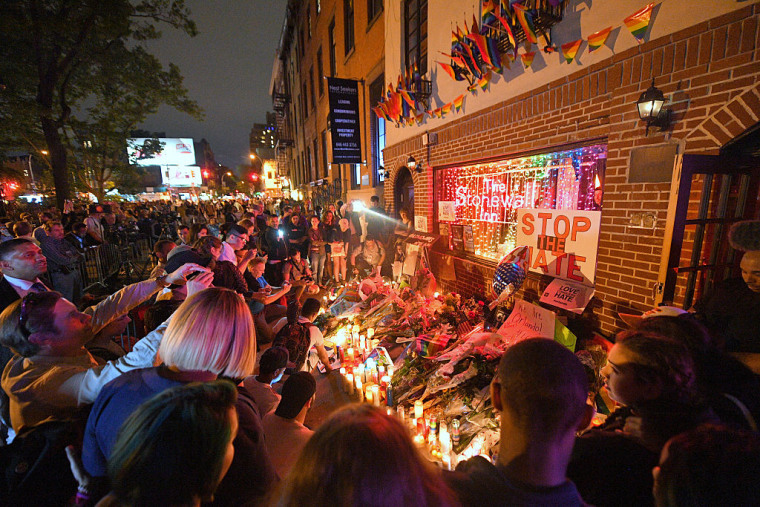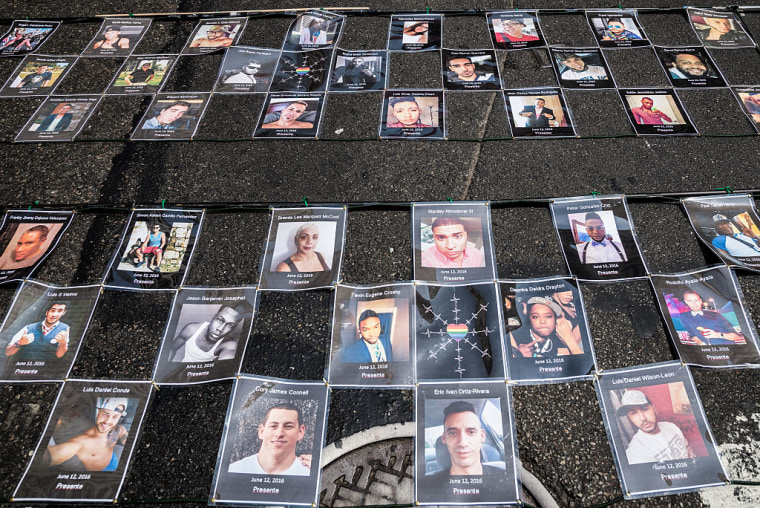I didn’t realize until that June morning, when we blinked our eyes awake and were met with the aftermath of Pulse on our TV screens and news feeds, that queers have a built-in homing device. But we do, and mine kicked in.
In one night, we lost 49 members of our LGBTQ family and allies at a gay nightclub in Orlando, most of whom were people of color. The tragedy left our community reeling and, in the enormity of its wake, demanded that we come together.
For me, those immediate hours were dominated by reflex. I checked to make sure that the people I loved were alive, even though I was sure they were. I texted people I hadn’t spoken to in a while, just to see them respond. It was comforting to know that even people I had fallen out of touch with were walking in the same fog. We were uniformly confused, but that meant we were on the same page.

And then I went to Stonewall. Today, a year after Pulse, I realize that I did so without thinking. I had only been living in New York for a month at that point, but I had been living as an out queer person for five years. In those years, I had learned how to coalesce around tragedy. I had attended enough vigils and lit enough candles to know how to grieve.
I wasn’t alone in my instinct. When I arrived at Stonewall, there was already a crowd. It’s easy to forget, one year out, how difficult it was to be anywhere near a gay bar that day. But people went anyway, and they brought flowers, protest signs, megaphones, and glitter—essentially, our base ingredients.
But what struck me about the community reaction to Pulse was that, while there was a palpable sense of shock, there was also an element of déjà vu. It was as if something like this had always been lurking in the shadowy stacks of our collective imagination, and had suddenly, violently assumed tangible form.
It seemed that grief had activated in us a dormant gravity. It pulled us to our nearest gay bar, or community center. It inspired a flurry of texts and calls and objectives—How do we help? What now? It brought us together so efficiently that I wondered if perhaps loss was our original creator, if queer culture itself had been shaped by grief.
When I came out as gay in Oklahoma, two older queer men took me under their wing and introduced me to a seedy, irreverent underworld with bitingly witty drag queens and cheap drinks. This world had its own language and customs, and there were so many intricacies and so many in-jokes that I wasn’t sure I would ever become fluent.
In a living room in a neighborhood in Norman, Oklahoma, they introduced me to "Paris is Burning," a documentary about ball culture in New York City. Queer people of color, locked out of prosperity in dominant society, created their own universe with their own system of rewards that simultaneously mocked and emulated the white, heterosexual world that had cast them aside.
They created looks and competed in categories like “executive realness,” in which they donned the outfits they would have worn if they had been given the chance to be a real businessperson, only, taken to the nth degree. The ones who came closest to attaining that realness won trophies, and a small fame could be cultivated from the scene.
I was enchanted by that sorcery, by the black magic of turning hurt into glamour. There was something powerful, maybe even vengeful about it. The nerve to exist, and to flourish in spite of everything, to be told that you’re not enough only to turn around and become a beautiful entity of your own creation. That was divinely petty. “Ha!” House Mother Pepper LaBeija says in my favorite line ever uttered. “Suffer.”
Of course, the backdrop of the documentary is the AIDS crisis that stole so many elders from us. I am one in a generation of LGBTQ people who grew up in the shadow of that loss, in the precarious place of knowing but not understanding. The crisis very much lives on today, to be sure, but when I was first inducted into queer culture, I couldn’t help but feel there was a crater at the center of it all. That something had narrowly missed me, and that I was coming of age in an aftermath of sorts.
One of my many mentors once told me, “We planted the seeds. You guys will get to eat the fruit.” And it did seem that way for a while. To me, no doubt because of my relative privilege within the community, it seemed like we had inherited a favorable trajectory; that we had been so lucky to be born at a time and place where the moral arc of the universe had started to bend, and everything would be downhill for us.
But as I cried on the night after Pulse, the names and photos of victims on my laptop, victims who, like me, were queer and Latino, and whose faces conjured in vivid detail the loved ones who peopled my existence, I realized that, all along, there had been this in the back of my mind—pain.

I realized that this pain had always existed in the collective queer memory, and that I had, for better or worse, inherited it. Pulse introduced us to new fears, but it also summoned the ghosts of old ones. Those ghosts reminded me of the great prompt that queerness introduces to all who decide to embrace it — Can you make a house of the cards you’ve been dealt?
And so I ask again, a year later, if we as a people are defined by grief. If, at the center of all this, behind the lights and the seedy bars and the glitter and the protests, there’s a unifying pain that connects us loosely in the good times, and tightly in the bad.
My answer, after much thinking and living and listening, is that we are not the pain. The pain is what was given to us. The grief is what is ours. Grief is the reaction, the medicine. It is the process through which we express our agency over loss, and it’s that grief that defines us.
Grief is not always a candlelit vigil, or a protest march, though it can be. Grief can be neon, can be a ball, can be camp, can be a read, or can be a parade. It can be as joyful as it is sad. Grief is the thing that comes after the hurt. It is an agent of healing. It is the reckoning, in all its phases both painful and triumphant, with the hurt you’ve been given.
When I think of queer culture that way, when I think of us as a people who gleefully mock the institutions that oppress and marginalize us, as a people whose bold existence inspires others to live without constraints, it informs me that we are not a community of mourners. We are a community of healers.
In short, pain provides the fabric. Queerness makes a gown of it.

